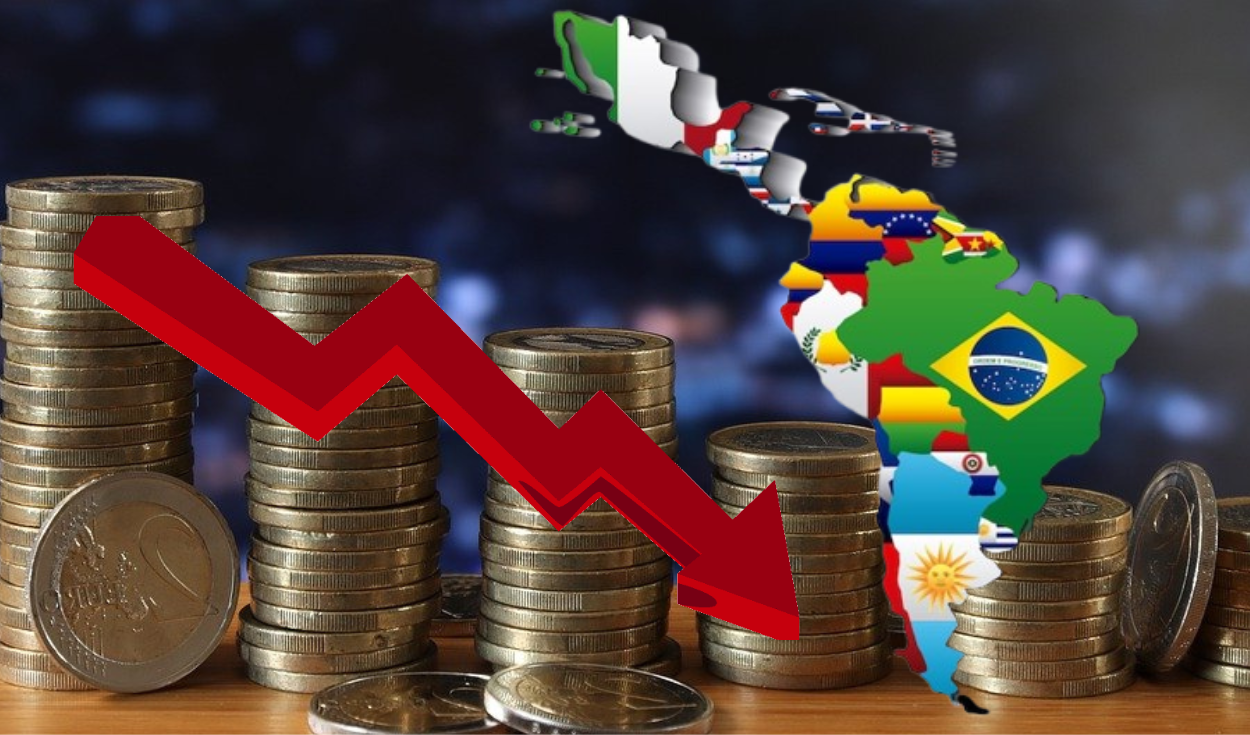
The economic situation in Latin America and the Caribbean will face various economic challenges during 2025, according to the official report of the Economic Commission for Latin America and the Caribbean (ECLAC). Given this, the same World Bank He estimated that Peru the growth of the economy will reach 2.5%, despite mining and infrastructure investments.
Likewise, the World Bank predicts that the global growth In the 2025-2026 period it will be only 2.7%, which would be insufficient to boost economic development. Although countries like Peru (2.5%) and Chile (2.2%) are below average, some nations project even lower growth.
Latin America 2025: Which country would have the least economic growth?
According to an ECLAC report, Bolivia has been projected as the nation with the lowest economic growth throughout the region of Latin America in 2025. It is estimated that the Bolivian economy will grow 1.5% during the year. Similarly, Mexico, considered a regional reference, presents the same growth projection of 1.5%. On the other hand, Ecuador appears in the list with a slightly higher forecast, reaching 1.6%.
However, some Caribbean countries still have smaller expectations. According to estimates, Belize would reach 1.2%growth, while Haiti would record the lowest level in the region, with just 0.5%. These figures reflect significant differences in the economic performance of Latin American and Caribbean countries, which shows a context of moderate growth in the region.
Problems facing the economy in Bolivia
One of the main challenges facing the Economy of Bolivia It is the decrease in natural gas production, a key resource for its exports. The reduction of income from this sector has negatively impacted energy investment and, consequently, the country’s economic development. In turn, the increase in inflation has reduced the purchasing power of citizens, which limits domestic consumption and slows down the growth of various economic activities.
Another significant problem is the shortage of dollars, a situation that affects the country for almost two years, since it generates uncertainty in the market and hinders commercial transactions. Likewise, the international reserves deficit affects the importation of fuels, essential to supply more than 70% of internal consumption. Due to the dependency of state subsidies, this situation has generated concerns about the sustainability of energy supply.
What country would lead economic growth in Latin America during 2025?
The Economic Commission for Latin America and the Caribbean (ECLAC) has predicted that the Dominican Republic will lead economic growth in the region in 2025, with a 5.2%projection. They are followed by Argentina, which will reach an increase of 7.5 percentage points, and Paraguay, which will experience a growth of 4.2%.
Likewise, the economies of Costa Rica, Nicaragua and Honduras also stand out in this report, with expected increases in their Gross Domestic Product (GDP) of 4.1%, 3.7% and 3.6%respectively. In contrast, Colombia will position itself in 15th place, with an estimated growth of 2.6% for next year, which represents an improvement with respect to 1.8% recorded in 2024.
Inflation in Latin America: What countries headed the list in 2024?
During the previous year, the Inflation in Latin America It was reduced to 3.4%, although this percentage continues to be higher than the one registered before the pandemic. Argentina It remains as the country with the highest inflation, reaching an alarming 112%, followed by Venezuela with 85%, Cuba with 27%and Bolivia with 9.9%.
On the other hand, Panama stood out for presenting the lower inflation in the region, with a negative variation of -0.3%. Also, El Salvador, Ecuador and Costa Rica reported low inflation figures, with 0.3%, 0.5%and 0.84%, respectively. In contrast, Uruguay, Colombia, Brazil and Chile face higher inflation levels, which are around 5%.
The entity’s report indicates that a slight increase in tax revenues is expected, mainly driven by the collection of taxes on the consumption of goods and services. However, a decrease in income from other sources is anticipated, in part due to the drop in income from non -renewable natural resources.
Source: Larepublica
Alia is a professional author and journalist, working at 247 news agency. She writes on various topics from economy news to general interest pieces, providing readers with relevant and informative content. With years of experience, she brings a unique perspective and in-depth analysis to her work.












